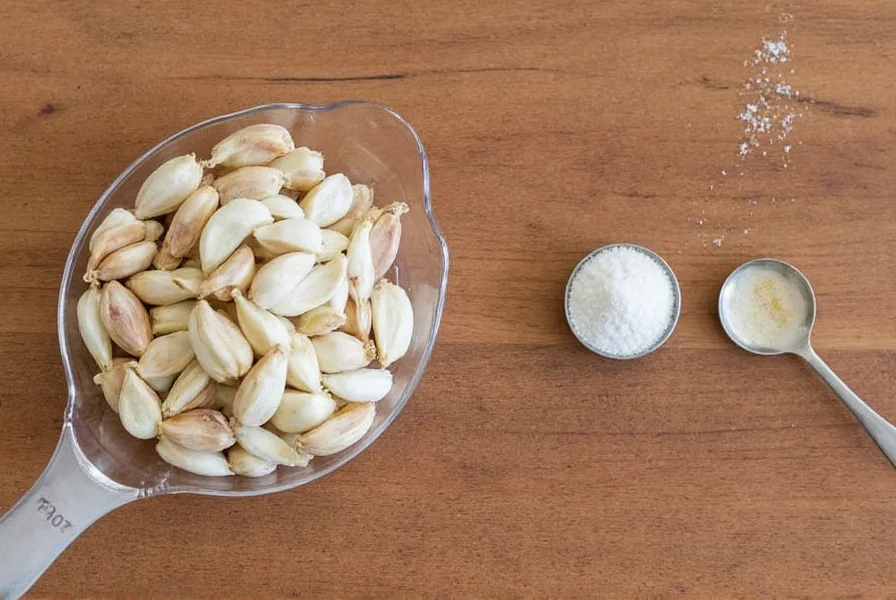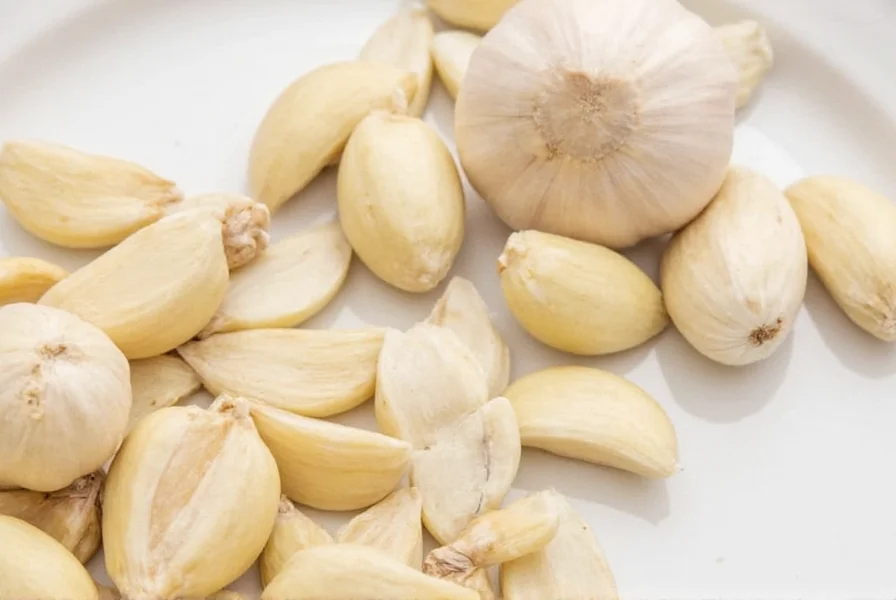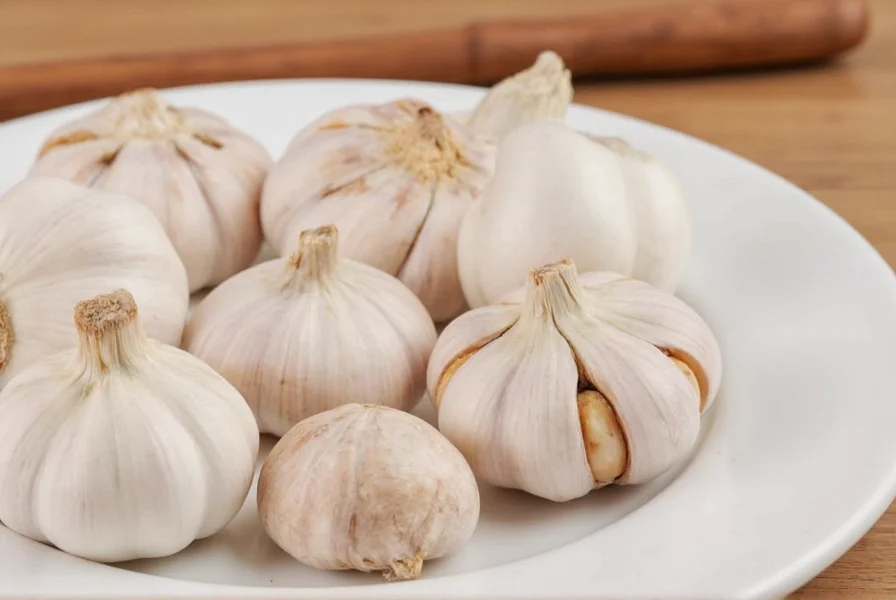Understanding garlic measurements is essential for precise cooking and recipe execution. Whether you're following a traditional recipe that specifies tablespoons of minced garlic or working with fresh cloves, knowing the proper conversion ensures your dishes achieve the perfect flavor balance without overpowering or under-seasoning.
Garlic Clove to Tablespoon Conversion Chart
The following reference chart provides accurate measurements for various garlic preparations. These values reflect average measurements for medium-sized cloves from standard grocery store bulbs:
| Garlic Form | Equivalent to 1 Tablespoon | Yield per Medium Clove |
|---|---|---|
| Minced garlic | 2-3 cloves | 1/2 teaspoon |
| Chopped garlic | 1.5-2 cloves | 3/4 teaspoon |
| Garlic paste | 1 clove | 1 tablespoon |
| Dried garlic flakes | N/A | 1/8 teaspoon = 1 clove |
| Garlic powder | N/A | 1/4 teaspoon = 1 clove |
Factors Affecting Garlic Measurement Accuracy
Several variables influence the precise conversion between whole cloves and measured tablespoons:
Clove Size Variations
Garlic bulbs contain cloves of different sizes. A single bulb typically includes:
- Small cloves: Found on the outer edges (yields ~1/4 tsp minced)
- Medium cloves: Most common in the middle layer (yields ~1/2 tsp minced)
- Large cloves: Center cloves (yields ~3/4 tsp to 1 tsp minced)
Preparation Method Impact
How you prepare garlic significantly affects volume:
- Minced: Finely chopped (smallest volume per clove)
- Chopped: Coarsely cut (about 25% more volume than minced)
- Pasted: Crushed with salt (most concentrated form)
| Recipe Requirement | Small Clove | Medium Clove | Large Clove |
|---|---|---|---|
| 1 teaspoon minced | 2 cloves | 1 clove | 1/2 clove |
| 1 tablespoon minced | 6 cloves | 2-3 cloves | 1-1.5 cloves |
| 1/4 cup minced | 24 cloves | 8-12 cloves | 4-6 cloves |
Practical Measurement Techniques
When precise garlic measurement matters for your recipe, consider these professional kitchen techniques:
Direct Measurement Method
For critical recipes, especially when working with expensive or potent ingredients:
- Peel your garlic cloves
- Process to your desired consistency
- Use an actual measuring spoon to portion
- Level off excess with a straight edge
Visual Estimation Guide
When measuring tools aren't available, use these visual references:
- 1/4 teaspoon minced garlic = size of a small pea
- 1/2 teaspoon minced garlic = size of a pencil eraser
- 1 teaspoon minced garlic = size of a quarter coin
- 1 tablespoon minced garlic = size of a ping pong ball

When Precision Matters Most
Certain culinary applications require exact garlic measurements:
- Preservation recipes: Canning and pickling where acid balance is critical
- Delicate sauces: Aioli, mayonnaise-based dressings where garlic can dominate
- Baking applications: Savory breads and pastry doughs
- Commercial food production: Recipe standardization for consistent results
For everyday cooking, slight variations in garlic measurement won't significantly impact most dishes. However, understanding the garlic cloves to tablespoons conversion becomes crucial when following precise recipes or adjusting for dietary preferences.
Common Substitutions and Adjustments
When fresh garlic isn't available, these substitutions maintain flavor integrity:
- Garlic paste: 1:1 replacement for minced garlic (most accurate substitute)
- Garlic powder: Use 1/8 teaspoon powder per medium clove (1 teaspoon powder = 8 cloves)
- Garlic salt: 1/4 teaspoon per medium clove (reduce additional salt by 1/4 teaspoon)
- Dried garlic flakes: 1/4 teaspoon flakes = 1 medium clove (reconstitute with water)

Professional Chef Tips for Garlic Measurement
Seasoned culinary professionals recommend these techniques for consistent results:
- Standardize your cloves: When a recipe calls for multiple cloves, select similarly sized cloves for consistent flavor distribution
- Consider garlic age: Older garlic has more concentrated flavor; use 25% less than specified
- Roast before measuring: Roasted garlic yields more volume but less intense flavor (use 33% more than raw)
- Freeze for easy measurement: Freeze minced garlic in tablespoon portions using ice cube trays
FAQ: Garlic Measurement Questions
Q: How many garlic cloves equal 1 tablespoon of minced garlic?
A: Typically, 2-3 medium garlic cloves yield 1 tablespoon of minced garlic. Small cloves may require 4-5 for the same measurement, while large cloves might need only 1.5-2. The exact conversion depends on clove size and how finely you mince the garlic.
Q: Can I substitute garlic powder for fresh cloves in recipes?
A: Yes, but with precise conversion. Use 1/8 teaspoon garlic powder to replace one medium garlic clove. For 1 tablespoon of minced garlic (2-3 cloves), substitute 1/4 to 3/8 teaspoon garlic powder. Remember that garlic powder has more concentrated flavor than fresh garlic, so adjust carefully based on your recipe's requirements.
Q: Why does my garlic measurement never match recipe expectations?
A: Garlic measurement inconsistencies usually stem from three factors: varying clove sizes within bulbs, different mincing techniques affecting volume, and garlic age impacting flavor intensity. For consistent results, either measure your minced garlic directly using spoons or select similarly sized cloves when a recipe specifies 'medium' cloves.
Q: How should I adjust garlic measurements for roasted garlic?
A: Roasted garlic yields about 30% more volume than raw garlic but has milder flavor. When substituting roasted for raw garlic, use approximately 33% more roasted garlic to achieve equivalent flavor intensity. For example, where a recipe calls for 1 tablespoon raw minced garlic (2-3 cloves), use 1.5 tablespoons of roasted minced garlic.











 浙公网安备
33010002000092号
浙公网安备
33010002000092号 浙B2-20120091-4
浙B2-20120091-4